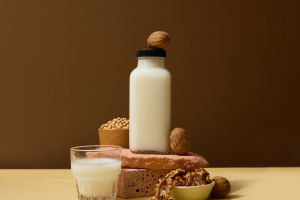From the moment the first sip of coffee is taken, the process begins. After swallowing, coffee makes its way to the stomach. Depending on whether the stomach is empty or full, coffee can remain there for anywhere from five minutes to over an hour.
Liquids, being quicker to digest than solids, are processed more rapidly when the stomach is empty.
Once in the stomach, coffee is sent to the small intestine, where its compounds, including caffeine and polyphenols, are absorbed. These compounds are lipid-soluble, meaning they cross the gastrointestinal lining with ease, according to Lisa Anderson, a professor at the University of Minnesota. This absorption process is where the unique properties of coffee come into play.
The Role of the Bladder
As coffee continues its journey, the fluid reaches the bladder. Sensors in the bladder detect when it begins to fill and send signals to the brain. This communication between the brain and bladder triggers the need to urinate, a process scientifically referred to as "micturition."
Caffeine plays a crucial role here. It stimulates the detrusor muscle in the bladder wall, encouraging it to contract and signal urgency. This effect can feel more pronounced for individuals with a sensitive bladder. Studies show that consuming caffeinated liquids accelerates the process compared to plain water.
Understanding Caffeine's Effects
Caffeine is known to irritate the bladder, leading to faster contractions and the sudden need to relieve oneself. However, responses vary significantly between individuals. Some find even small amounts of caffeine uncomfortable, while others tolerate large quantities without issue. Regular caffeine consumers may also develop a degree of resistance over time.
Caffeine’s Diuretic Nature
Caffeine acts as a diuretic, meaning it can cause the body to expel more fluid than is consumed. This is why some people may feel they are urinating more than the amount they drank. At higher levels of caffeine consumption, the diuretic effect becomes more pronounced, which can lead to dehydration if not balanced with other fluids.
For most individuals, consuming up to 400 mg of caffeine daily—equivalent to about four cups of brewed coffee—is considered safe and unlikely to cause significant dehydration. To monitor hydration, experts recommend checking the color after urinating. A light yellow, akin to lemonade, is an indicator of proper fluid balance, while darker shades may suggest dehydration.
Reducing Caffeine's Impact
To minimize frequent bathroom trips, gradually reducing caffeine intake can help. For instance, replacing one cup of regular coffee with decaffeinated coffee is an effective strategy. Small adjustments can make a noticeable difference in how the body reacts.
When to Seek Help?
If the frequency of urination disrupts daily life, consulting a healthcare professional, such as a urologist, is advisable. They can provide tailored solutions, including lifestyle changes or other treatments, to address the issue effectively.
Coffee may be a beloved beverage, but understanding its impact on the body ensures its effects are managed while still enjoying its benefits. Balancing intake and staying hydrated are key to maintaining comfort and health.


